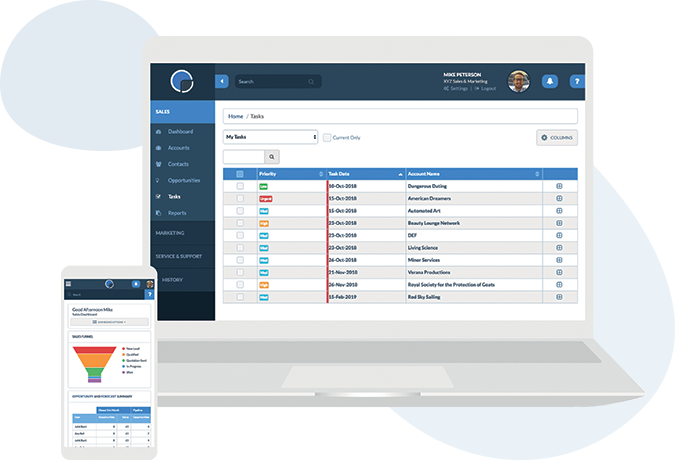This historical data is fed into a mathematical model that considers key trends and patterns in the data. The objective of predictive analytics is to make predictions about future events which can have immense benefits.
 What Is Data Analytics Definition From Whatis Com
What Is Data Analytics Definition From Whatis Com
Ad The 5 Myths of Advanced Analytics - Potential Solutions to Common Data Science Myths.

Define predictive analytics. Ad Intelligent Forecasting drives real business value. Definition Predictive analysis more commonly known as predictive analytics is a type of data analysis which focuses on making predictions about the future based on data. Predictive analytics involves extracting data from existing data sets with the goal of identifying trends and patterns.
Predictive analytics is an area of statistics that deals with extracting information from data and using it to predict trends and behavior patterns. Predictive analytics is the branch of the advanced analytics which is used to make predictions about unknown future events. Predictive analytics refers to using historical data machine learning and artificial intelligence to predict what will happen in the future.
In business it can be used to model various scenarios for how customers react to new product offerings or promotions and how the supply chain might be affected by extreme weather patterns or demand spikes. Definition of Predictive Analytics. Predictive analytics uses many techniques from data mining statistics modeling machine learning and artificial intelligence to analyze current data to make predictions about future.
Introduction to Predictive Analytics. Can machines do what we can do. Download the Whitepaper to Learn More About How TIBCO Data Science Can Help.
Can machines do what we can do. It is important to remember that no statistical algorithm can predict the future with 100 certainty. Ad The 5 Myths of Advanced Analytics - Potential Solutions to Common Data Science Myths.
Predictive analytics provides companies with actionable insights based on data. Predictive Analytics is the domain that deals with the various aspects of statistical techniques including predictive modeling data mining machine learning analyzing current and historical data to make the predictions for the future. Leapfrog competitors and reinvent planning to gain competitive advantage.
For example the manufacturer of an aircraft will like to predict an engine failure. Ad Empowers people to rapidly deploy easily extend applications. Predictive analytics refers to the analysis of big data to make predictions and determine the likelihood of future outcomes trends or events.
Find out in this white paper. What is Predictive Analytics. The model is then applied to current data to predict what will happen next.
What is Predictive Analytics. Leapfrog competitors and reinvent planning to gain competitive advantage. Ad Empowers people to rapidly deploy easily extend applications.
Predictive analytics provides estimates about the likelihood of a future outcome. Download the Whitepaper to Learn More About How TIBCO Data Science Can Help. Find out in this white paper.
Mathematically speaking predictive analytics uses statistics and machine learning in order to come up with quantitative predictions about the future in terms of a specific value or an estimated probability. Predictive analytics is a branch of advanced analytics that makes predictions about future outcomes using historical data combined with statistical modeling data mining techniques and machine learning. Companies employ predictive analytics to find patterns in this data to identify risks and opportunities.
On the other hand a service like Netflix will like to predict when a subscriber will cancel their subscription. Predictive analytics is used in a wide. Predictive analytics definition Predictive analytics is a branch of advanced analytics that makes predictions about future events behaviors and outcomes.
Ad Intelligent Forecasting drives real business value. These trends and patterns are then used to predict future outcomes and trends. The enhancement of predictive web analytics calculates statistical probabilities of future events online.
It uses statistical techniques including machine learning algorithms and sophisticated predictive modeling to analyze current and historical data and assess the likelihood that something will take place even if that something isnt on a. What is predictive analytics.
:max_bytes(150000):strip_icc()/what-is-transformational-leadership-2795313_color1-5be9922046e0fb0026455896.png)









